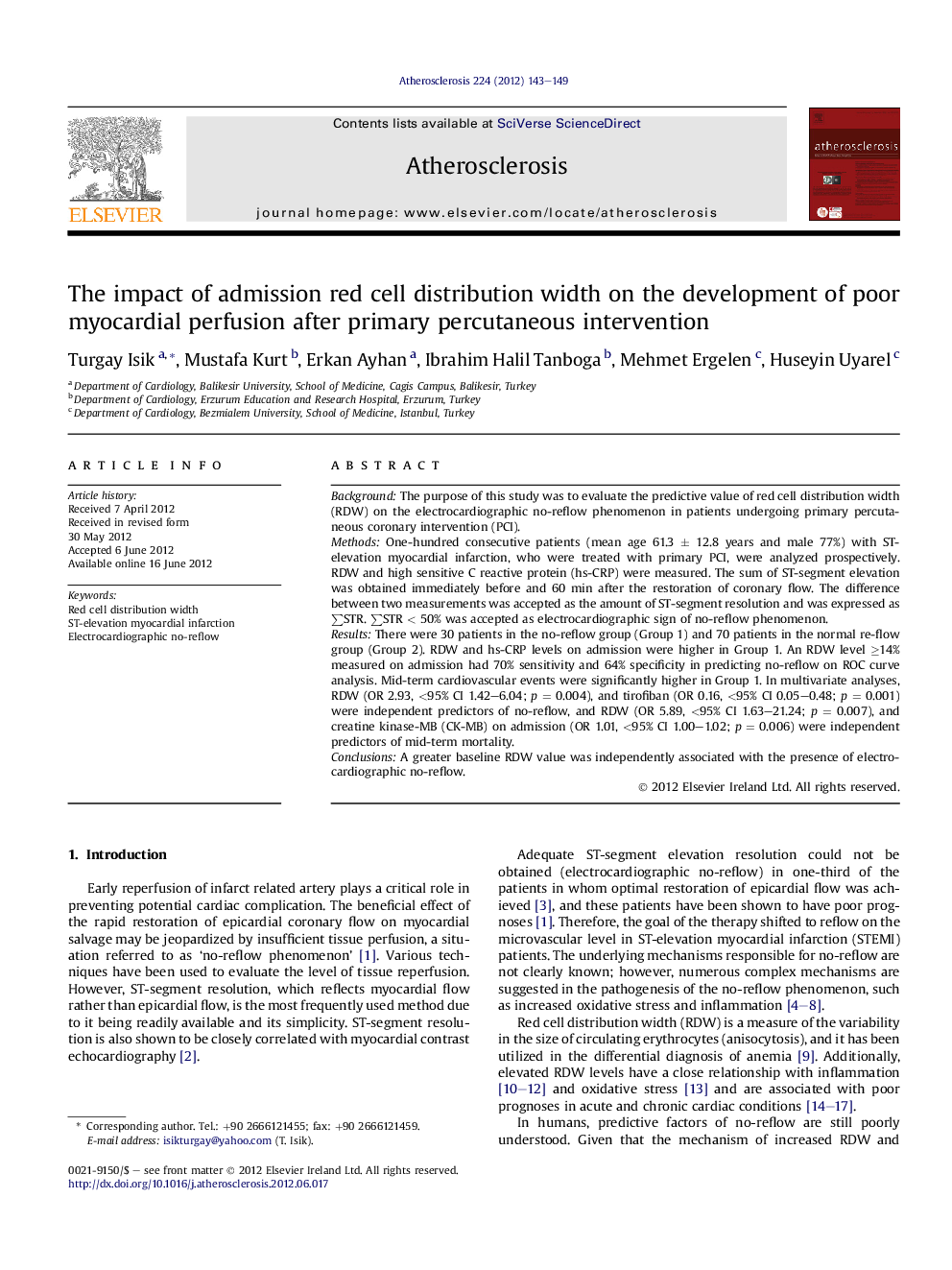| کد مقاله | کد نشریه | سال انتشار | مقاله انگلیسی | نسخه تمام متن |
|---|---|---|---|---|
| 5947553 | 1172371 | 2012 | 7 صفحه PDF | دانلود رایگان |

BackgroundThe purpose of this study was to evaluate the predictive value of red cell distribution width (RDW) on the electrocardiographic no-reflow phenomenon in patients undergoing primary percutaneous coronary intervention (PCI).MethodsOne-hundred consecutive patients (mean age 61.3 ± 12.8 years and male 77%) with ST-elevation myocardial infarction, who were treated with primary PCI, were analyzed prospectively. RDW and high sensitive C reactive protein (hs-CRP) were measured. The sum of ST-segment elevation was obtained immediately before and 60 min after the restoration of coronary flow. The difference between two measurements was accepted as the amount of ST-segment resolution and was expressed as âSTR. âSTR < 50% was accepted as electrocardiographic sign of no-reflow phenomenon.ResultsThere were 30 patients in the no-reflow group (Group 1) and 70 patients in the normal re-flow group (Group 2). RDW and hs-CRP levels on admission were higher in Group 1. An RDW level â¥14% measured on admission had 70% sensitivity and 64% specificity in predicting no-reflow on ROC curve analysis. Mid-term cardiovascular events were significantly higher in Group 1. In multivariate analyses, RDW (OR 2.93, <95% CI 1.42-6.04; p = 0.004), and tirofiban (OR 0.16, <95% CI 0.05-0.48; p = 0.001) were independent predictors of no-reflow, and RDW (OR 5.89, <95% CI 1.63-21.24; p = 0.007), and creatine kinase-MB (CK-MB) on admission (OR 1.01, <95% CI 1.00-1.02; p = 0.006) were independent predictors of mid-term mortality.ConclusionsA greater baseline RDW value was independently associated with the presence of electrocardiographic no-reflow.
⸠We investigated the predictive value of RDW on the electrocardiographic no-reflow. ⸠Baseline RDW levels were significantly increased in patients with no-reflow. ⸠Baseline RDW levels were independent predictors for electrocardiographic no-reflow. ⸠Baseline RDW levels were an independent predictor of 6 month cardiac mortality.
Journal: Atherosclerosis - Volume 224, Issue 1, September 2012, Pages 143-149